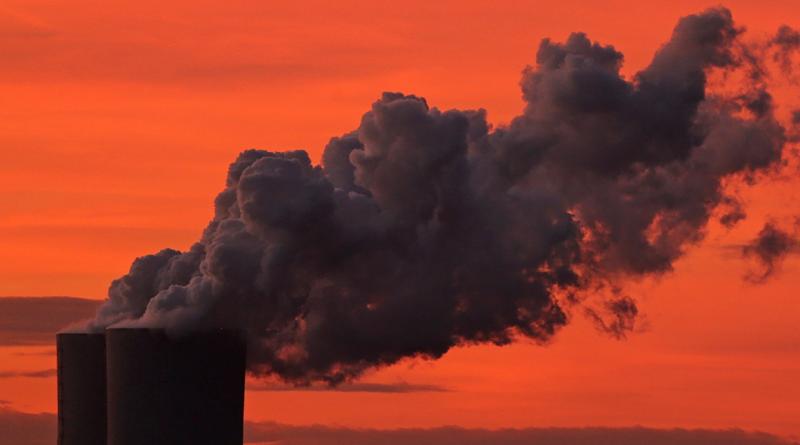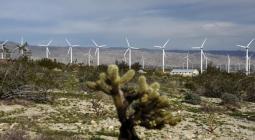We have too many fossil-fuel power plants to meet climate goals.

The fossil-fuel burning power plants, factories, vehicles, and buildings we've already built will, if operated normally over their full lifetimes, almost certainly warm the Earth more than the Paris Agreement climate target of 1.5 degrees Celsius (2.7 degrees Fahrenheit), a new study concludes.
The implications are striking: To limit warming to 1.5°C., not only should no new fossil-fuel-using infrastructure be built, ever again, some existing power plants need to shut down early—and yet today many new power plants are under construction or planned.
“Our study is dead simple,” said Steven Davis of the University of California, Irvine, a co-author of the paper published in Nature. “We wanted to know what happens if we don’t build any more fossil-fuel-burning stuff as of 2018.”
To answer that question Davis and colleagues looked at all the emissions from electricity, energy, transport, residential, and commercial infrastructure as of 2018. They then estimated the total “carbon commitment”—the future CO2 emissions from those structures and devices, based on the average number of years they’d be in service.
A new coal plant built today, for example, will emit millions of tons of CO2 every year throughout its 40-year lifespan. A new car that emits four tons of CO2 a year has a lifetime carbon commitment of 60 tons based on a 15-year lifespan. Although some of that CO2 gets soaked up by forests and oceans, most will remain in the atmosphere, trapping heat, for hundreds of years—unless we deploy technologies to suck it back out again.
Add up all those lifetime emissions from existing infrastructure, Davis and his colleagues estimated a total carbon commitment of about 658 billion metric tons of CO2. That’s 78 billion tons above the maximum the Intergovernmental Panel on Climate Change (IPCC) says can be emitted to have a better than 50 percent chance of stabilizing temperatures at 1.5°C of warming.
Although the U.S. is responsible for far more carbon already emitted to the atmosphere than any other country, China has by far the largest carbon commitment to the future, some 41 percent of the total; the U.S. and India each account for 9 percent and the European Union for 7 percent. The reason is that the Chinese economy has grown so rapidly and so recently that its power plants and factories are young, with long lives ahead of them. The average Chinese coal-fired power plant is just 11 years old, according to the study, whereas the average age of American plants is almost 40.
Because the study does not include all sources of CO2 emissions, its projections of the challenge posed by our carbon commitment might be considered conservative rather than alarmist.
It doesn’t include emissions from agriculture, deforestation and other land use changes, which represent about 24 percent of total emissions today. Nor does it include the considerable emissions involved in getting fossil fuels out of the ground. To get oil from Canada’s oil sands, for example, requires the burning of nearly one third of the country’s natural gas production.
Driving blind
The UN and individual countries have focused mainly on annual emissions to address climate change, which is insufficient, Davis said: “That’s like driving down the highway and only looking out of the side window.” Decisions made today on whether or not to build more fossil-fuel infrastructure will lock in future CO2 emissions, he said, and thus determine whether the world has a reasonable chance of keeping global warming below the main Paris agreement target of 2°C (3.6°F).
The study counted up the potential carbon commitment from the coal, gas, and oil-burning power plants that are currently under construction or in the planning stages. If those are completed, the global carbon commitment shoots up to around 846 billion tons of CO2. That would use up most of the carbon budget remaining between today and a world that's 2°C warmer.
And that’s just power plants: Davis and his colleagues didn’t attempt to estimate the carbon commitments from other new fossil fuel infrastructure—vehicles, buildings, factories—that are being built this year or will be in future years.
Every little bit hurts. Global warming is like being in a mine field that gets progressively more dangerous, Michael Mann, a climatologist and director of the Earth System Science Center at Penn State previously told National Geographic.
“The further we go the more explosions we are likely to set off: 1.5°C is safer than 2°C, 2°C is safer than 2.5°C, 2.5°C is safer than 3°C, and so on,” said Mann.
It’s no surprise we’re in a very tough spot when it comes to staying below 2°C, never mind limiting warming to 1.5°C, said Glen Peters, research director at Norway’s Center for International Climate Research. “The rapid growth in renewables is still not sufficient to cover the annual increase in energy demand,” Peters explained in an email.
To stay below 1.5°C or 2°C, however, “it’s very likely fossil infrastructure will have to be retired earlier than planned,” he said.
In addition to mothballing hundreds and possibly thousands of coal- and gas-fired power plants, other options include restoring millions of square miles of forests, deploying costly technologies that capture carbon on a massive scale, and building out renewables even faster. Most likely a combination involving all of those will be needed.
“We’re in an all-hands on deck situation,” said Niklas Höhne of theNewClimate Institute for Climate Policy and Global Sustainability in Germany. “Major, bold steps are needed, including not adding any more coal power plants,” Höhne said in an interview last week, as Europe was weathering another record heat wave.
“We’ve only had one degree Celsius of global warming and it’s almost 40°C (104°F) here in Germany today, a temperature we’ve never seen before.”
Pledges to reduce emissions by the U.S., Europe, China, India and other nations under the Paris Agreement are nowhere near what’s needed, he said. The latest round of UN climate negotiations in Bonn, Germany, which ended June 27, failed to increase those pledges. The world remains on a trajectory to more than 3°C of warming, Höhne said.
The Nature paper reinforces concerns expressed lately by central banks and other financial institutions that continuing investments in fossil fuel infrastructure could pose a threat to global economic stability, said Bill Hare, a climate scientist at Climate Analytics, a non-profit climate science and policy institute based in Berlin. Trillions of dollars in fossil-fuel-intensive assets may lose their value because power plants, refineries, and other industrial facilities have to shut down or employ expensive carbon-capture technology to curb their CO2 emissions.
Power plants and industry represent 75 percent of committed emissions but only 20 percent of the financial assets in the global fossil-fuel-burning infrastructure. Early retirement of these facilities would be the most cost-effective solution, the paper concludes. The best action to take from a climate perspective, or even the most cost-effective, may not be the most politically feasible, however.
“We’re hoping this study paints a clear picture of what’s required to meet the Paris climate targets,” said Davis. “The decisions made every day involving any new fossil fuel infrastructure are super important.”
1 July 2019
NATIONAL GEOGRAPHIC




